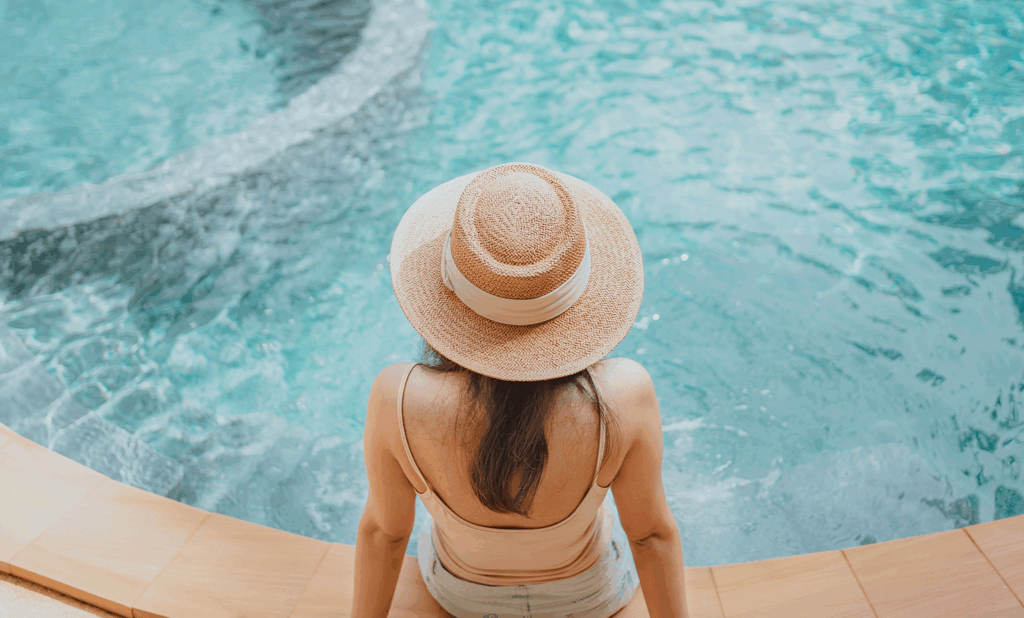As summer approaches, tanning beds fill up and people flock to sunny spots hoping to “prep” their skin for vacation. The idea? That getting a “base tan” will shield your skin from sunburn once you hit the beach.
In reality, base tanning may do more harm than good. That early tan you worked for offers very little protection, and the risks far outweigh the benefits.
The science behind tanning
To understand why base tans don’t help, we need to look at what tanning really is.
“Tanning is your skin’s defense mechanism. When exposed to Ultraviolet (UV) rays — whether from the sun or a tanning bed — your skin reacts by producing melanin, the pigment that darkens your skin,” says Dr. Matthew Hazey, a dermatologist at Mount Nittany Health. “This process is your body’s attempt to protect deeper layers of skin from further damage.”
Sounds like a good thing, right? Not necessarily. Melanin offers only minimal UV protection. Even after your skin darkens, a tan provides the equivalent of about 2-4 Sun Protection Factor (SPF), much lower than dermatologists recommend for daily sun exposure.
Ultraviolet (UV) radiation exposure includes two types of rays:
- UVA rays penetrate deep into the skin and are primarily responsible for long-term damage like wrinkles and cancer
- UVB rays affect the surface layers and cause sunburn
How your skin reacts to UV rays also depends on your skin phototype, a classification that ranges from fair (Type I) to very dark (Type VI). Fair-skinned individuals produce less melanin, burn more easily and gain less natural UV protection from tanning. No matter how deep the tan is, it proves that your skin cells have already been damaged.
Indoor vs. outdoor tanning: Different sources, similar risks
Whether tanning under the sun or in a salon, they both pose risks to your health. Often marketed as a “safe” or “measured” way to tan, tanning beds primarily emit UVA rays, which penetrate deeper into the skin than UVB rays and are strongly associated with melanoma.
Tanning beds typically expose users to up to 12 times more UVA radiation than natural sunlight. While they may avoid the intense burning of UVB rays, the long-term cellular damage from UVA is harder to detect.
Here’s what research shows:
- Just one indoor tanning session increases your melanoma risk by 20%
- Using tanning beds before age 35 increases melanoma risk by up to 75%
- Indoor tanning also raises your risk of squamous and basal cell carcinomas — the two most common skin cancers
Long-term consequences of seeking a base tan
What starts as a light golden glow may not feel dangerous. However, repeated UV exposure leaves lasting effects on your skin over time.
The negative impacts of what a base tan really gets you include:
- Premature aging: Wrinkles, dark spots and leathery texture
- Increased cancer risk: Particularly melanoma, which can spread quickly
- DNA damage: Cellular changes that may take years to appear
- Medical bills: Treatment for skin cancer can be expensive and ongoing
- Emotional distress: A skin cancer diagnosis, especially in younger patients, often brings anxiety, lifestyle changes and regret
Even occasional tanning habits can set the stage for long-term damage. There’s no such thing as a safe tan.
Better alternatives: How to protect your skin
Want to enjoy the sunshine without putting your skin at risk? Dermatologists recommend a few key steps for healthy, responsible sun exposure:
- Use sunscreen every day: Choose a broad-spectrum SPF 30 or higher. Reapply every two hours and after swimming or sweating.
- Cover up: Wear hats, sunglasses and UV-protective clothing when possible.
- Avoid peak sun hours: Stay in the shade between 10 a.m. and 4 p.m. when UV rays are strongest.
- Try sunless tanning products: Self-tanning lotions and sprays can give your skin a summer glow without the UV damage.
- Take it slow: If you’re planning a beach vacation, gradually increase your sun exposure while using protection.
“For very fair skin, I recommend broad-spectrum SPF 50+, zinc oxide or titanium dioxide-based sunscreens,” says Dr. Hazey. “For medium skin tones, broad-spectrum SPF 30-50 works well. You still need SPF 30+ for darker skin tones to prevent skin damage and premature aging.”
Special considerations for high-risk groups
Some people need to take extra precautions in the sun. If you fall into any of these categories, talk to your healthcare provider about what to do to protect your skin in the sun:
- Children and teens: Young skin is especially vulnerable, and early UV exposure increases cancer risk later in life
- People with fair skin or red hair: These skin types burn easily
- Anyone with a family history of skin cancer
- Individuals on photosensitizing medications: Certain antibiotics, acne medications and antidepressants can increase sun sensitivity
- Those with previous sunburns: Past sunburns indicate prior damage and increase future risk
A base tan might feel like a head start on your summer glow — but the science is clear: it’s not protecting you. At best, you get the equivalent of SPF 2 to 4. At worst, you increase your risk for skin cancer and long-term skin damage.
If you love the sun, that’s okay. Just protect your skin while you enjoy it. Skip the tanning beds, apply sunscreen and choose safe, healthy ways to get that summer glow.
Dermatology
Discover more about Dermatology, including locations and providers, at Mount Nittany Health



